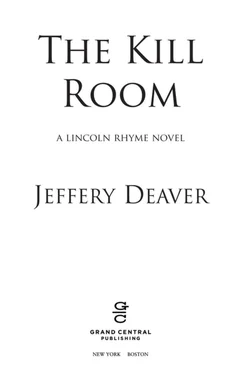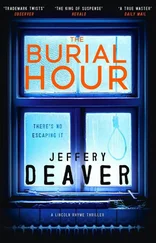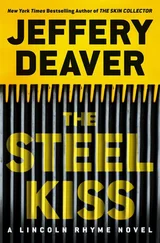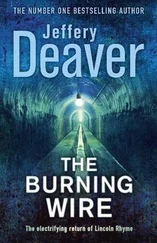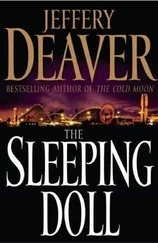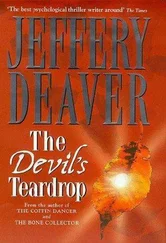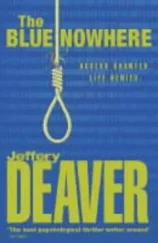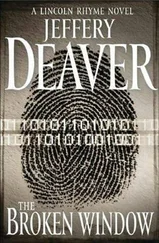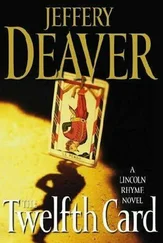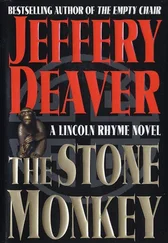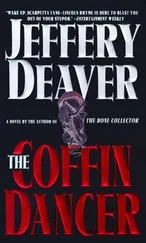Sellitto said, “Can’t be that hard to find. There’s gotta be only one or two kinds of guns in the world that’ll fire a slug like that. It’s pretty unique.”
“ Pretty unique,” Rhyme blurted, with a frosting of sarcasm. “Just like being sort of pregnant.”
“Linc,” Sellitto replied cheerfully, “you ever think about teaching grade school? I’m sure the kids’d love ya.”
Sellitto was right substantively, though, Rhyme knew. The rarer the bullet, the fewer the types of guns that will fire it. This would make it easier to identify the rifle and therefore easier to trace it to Barry Shales.
The two characteristics of a bullet that link it to the weapon that fired it are caliber, which they now knew, and rifling marks.
All modern firearms barrels have spiral troughs cut into them to make the bullet rotate and thus move more accurately to the target. This is known as rifling (even though it applies to pistols too). Gun manufacturers make these troughs—called lands (the raised part) and grooves—in various configurations, depending on the type of gun, the bullet it’s intended to shoot and its purpose. The twist, as it’s called, might spin the bullet clockwise or counter, and will spin it faster or slower depending on how many times the slug revolves in the barrel.
A look at the slug revealed that Barry Shales’s gun spun the slug counterclockwise, once every ten inches.
This was unusual, Rhyme knew; spirals are generally tighter, with the ratio of 1:7 or 1:8.
“Means it’s a long barrel, right?” Rhyme asked Cooper.
“Yep. Very long. Odd.”
Given the rare caliber and rifling, it would normally be easy to isolate brands of semiautomatic rifles that produced characteristics like that. Ballistics databases correlate all this information and a simple computer search returns the results in seconds.
But nothing was normal about this case.
Sachs looked up from her computer and reported, “Not a single hit. No record of any commercial arms manufacturer making a rifle like that.”
“Is there anything else we can tell about the gun?” Rhyme asked. “Look over the crime scene photos, Moreno’s body. See if that tells us anything.”
The crime scene specialist shoved his glasses up high and rocked back and forth as he regarded the grim pictures. If anybody had insights it would be Mel Cooper. The detective was active in the International Association for Identification, which was nearly a hundred years old, and he had the highest levels of certification you could attain from the IAI, in all areas of specialty: Forensic Art, Footwear and Tire Track Analysis, Forensic Photography/Imaging, Tenprint Fingerprint, and Latent Print—as well as Bloodstain Pattern Analysis, a personal interest of both Cooper and Rhyme.
He could read crime scene photos the way a doctor could an X-ray. He now said, “Ah, take a look at that, the spread.” He touched a photo, indicating the blood and bits of flesh and bone on the couch and floor behind it. “He fired from two thousand yards, right?”
“About that,” Rhyme said.
“Amelia, what would the typical velocity of a round that big be?”
She shrugged. “Out of the muzzle at twenty-seven hundred feet per second, tops. Speed at impact? I’d say eighteen hundred.”
Cooper shook his head. “That slug was traveling at over three thousand feet a second when it hit Moreno.”
Sachs said, “Really?”
“Positive.”
“Fast. Real fast. Confirms the rifle had a particularly long barrel and means the shell’d be loaded with a lot of powder. Normally a slug that size would have forty or forty-two grains of propellant. For that speed, I’d guess twice as much, and that means a reinforced receiver.”
This was the part of the rifle that held the cartridge for firing. The receiver was thicker than the barrel to withstand the initial pressure of the expanding gases, so that the gun didn’t blow up when the shooter pulled the trigger.
“Any conclusions?”
“Yeah,” Sachs said. “That Barry Shales, or somebody at NIOS, made the gun himself.”
Rhyme grimaced. “So there’s no way to trace a sale of a serial-numbered rifle to NIOS or Shales. Hell.”
His third goal, linking the bullet to Shales through his weapon, had just grown considerably more difficult.
Sachs said, “We’re still waiting on Information Services to get back to us on the datamining. Maybe they’ll find a record of Shales buying gun parts or tools.”
Rhyme shrugged. “Well, let’s see what else the slug tells us. Mel, friction ridge?”
Fingerprints actually can survive a bullet’s transit through the air, through a body and sometimes even through a wall.
Provided Barry Shales had touched the bullets with his bare fingers. Which wasn’t the case. Sachs, goggled, was blasting the slug with an alternative light source wand. “None.”
“What about trace?”
Cooper was going over the slug now. “Bits of glass dust from the window.” He then used tweezers to remove some minuscule bits of material. He examined the specimens closely under the microscope. “Vegetation,” Rhyme postulated, looking at the monitor.
“Yes, that’s right,” the tech said. He ran a chemical analysis. “It’s urushiol. A skin-irritating allergen.” He looked up. “Poison ivy, sumac?”
“Ah, the poisonwood tree. Outside the window of the Kill Room. The bullet must’ve passed through a leaf before it hit Moreno.”
The tech also found a fiber, identical to those making up Moreno’s shirt, and traces of blood, which matched the activist’s blood in type.
Cooper said, “Aside from that and the ejecta, there’s nothing else on the bullet.”
Rhyme turned his new chair to face the evidence boards. “Ron, if you could update our opus with your fine Catholic school handwriting? I need to optic the big picture,” he added, unable to resist a bit of jargon worthy of their leader in absentia, Captain Bill Myers.
CHAPTER 58
Robert Moreno Homicide
Boldface indicates updated information
Crime Scene 1.
Suite 1200, South Cove Inn, New Providence Island, Bahamas (the “Kill Room”).
May 9.
Victim 1: Robert Moreno.
COD: Single gunshot wound to chest.
Supplemental information: Moreno, 38, U.S. citizen, expatriate, living in Venezuela. Vehemently anti-American. Nickname: “the Messenger of Truth.” Determined that “disappear into thin air” and “blowing them up” NOT terrorism references.
Shoes contained fibers associated with carpet in hotel corridor, dirt from hotel entryway, also crude oil.
Clothing contained traces of breakfast: pastry flakes, jam and bacon, also crude oil.
Spent three days in NYC, April 30–May 2. Purpose?
May 1, used Elite Limousine.
Driver Tash Farada (regular driver Vlad Nikolov was sick. Trying to locate).
Closed accounts at American Independent Bank and Trust, prob. other banks too.
Drove around city with interpreter Lydia Foster (killed by Unsub 516).
Reason for anti-U.S. feelings: best friend killed by U.S. troops in Panama invasion, 1989.
Moreno’s last trip to U.S. Never would return.
Meeting in Wall Street. Purpose? Location?
No record of terrorist investigations in area.
Met with unknown individuals at Russian, UAE (Dubai) charities and Brazilian consulate.
Met with Henry Cross, head of Classrooms for the Americas. Reported that Moreno met with other charities, but doesn’t know which. Man following Moreno, white and “tough looking.” Private jet tailing Moreno? Blue color. Checking for identification.
Читать дальше
